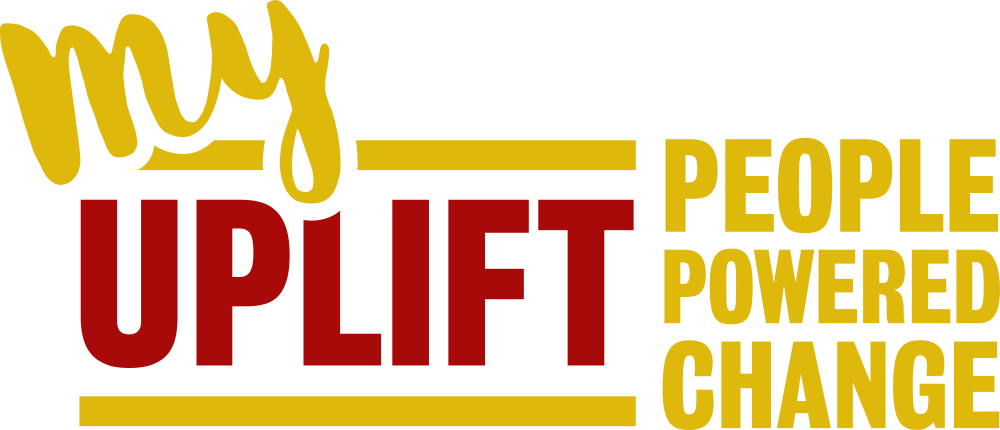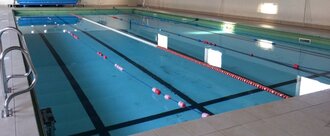- Featured
- Animal Rights
- Anti-racism
- Arts & Culture
- Children
- Climate
- Corporate accountability
- Crime
- Disability rights
- Economic
- Education
- Environment
- Food and Sustainable Production
- Gender Equality
- Governance and Transparency
- Health
- Housing
- LGBT Rights
- Mental health
- Northern Ireland
- Planning
- Privacy and Data Protection
- Rural Inequality
- Social Justice
- Trade
- Transport and Infrastructure
- Workers' Rights
- More
-
Stop the Stigma of Mental Health in Third Level and Further EducationIt is important for this to happen, because there are students in both Third Level and Future Education Colleges who are being looked down upon and made feel ashamed and embarrassed because of their mental health and the majority of us Students are being kicked out of their college for having a Mental Health Illness. You can't just stick a plaster over a Mental Health Illness, it's not the same as a broken arm or leg; were it it will heal in approximately 6 weeks. I think both students and teachers should be taught about Mental Health so they can understand it more and know exactly how to help someone with Mental Health; mental health isn't just an illness; it affects everyone differently and the majority of mental health goes unnoticed due to it been invisible. 1 in 5 people have Mental Illness, 5 in 5 people have Mental Health We want you Simon Harris to join us Students in stopping this Stigma of Mental Health in college, especially now in these difficult times.29 of 100 SignaturesCreated by Danielle Cuddihy

-
Open our Libraries Now for Click & Collect ServiceLibraries can safely operate a click and collect service while maintaining adhering to the current guidelines. Under Level 5 , retailers which can provide a click and collect service to customers are allowed to continue to operate, this shows lack of consistency in Government policy. Public libraries provide an essential service to local communities. While we acknowledge that online services such as audio and ebook rentals are offered under Level 5, these services should not be considered equivalent to library book rental.58 of 100 SignaturesCreated by Claire Grace
-
Save Marian College Swimming PoolDid you learn to swim in Marian College Swimming Pool? Generations of local children and adults alike have been using this unique facility in the heart of Dublin 4 since the early 1960's. Marian has played a key role in helping our communities fitness and wellbeing. We believe that the time is now to maintain and build upon its importance and outreach. Securing a better society where community, social interaction, exercise and education are at the heart of our daily lives. We would like to be assured that there is a plan in place to re-open in the not too distant future. Our entire community is in danger of losing the swimming pool forever, if nothing is done. This petition serves to show how much support and goodwill exist to you the board of management, together with your dedicated staff. Who have the knowledge to plan a safe reopening of this much needed facility. Please show your support to Save Marian Swimming pool from closure , before it is gone forever.3,428 of 4,000 SignaturesCreated by Save Marian College Swimming Pool
-
Require universities to partially refund international tuition fees for 2020/21 due to COVID-19The Irish Government should care because thousands of international students studying in Ireland are going to be going into debt for an education that might not be worth the amount of money universities are asking for. Students should get the chance to experience university life in full, with access to societies, clubs, opportunities, and chances to network and develop meaningful relationships face-to-face. Many benefits of attending University have been taken away by COVID-19. There is so much more to University than the academic side.227 of 300 SignaturesCreated by Caitlin Hogan
-
Stop Development on Gallwey's Hill TramoreThe former owner of this site should be commemorated as someone who triumphed over adversity, by dedicating this iconic viewing spot in Tramore to those who struggle due to exclusion. An accessible community garden with coffee shop would offer all in the town and beyond, a space and workplace for inclusion along with environmental appreciation.910 of 1,000 SignaturesCreated by Una Dunphy
-
The outrageous cuts to EWSS and PUPIt is with a heavy heart that I am writing to you in regards to the cuts in EWSS and PUP last Friday 18th September. Despite several thousand emails arriving into TD's inboxes last week on this matter, all we have received are unfulfilled promises from the current government. The news of these cuts came at the same time we were informed that the bars in Dublin and surrounding areas would be shut for a further 3 weeks! To say this is kicking us while we're down, is an understatement. I know a lot of local constituents facing hardship as a direct result of the lack of action, leadership, and support from the current government, during this pandemic. This includes volumes of bartenders, chefs, kitchen porters, managers, servers, reservations staff, security, HR departments, young performers and musicians! There is a deep rooted culture that is being neglected for public health reasons, and although that is justifiable, it does not in the slightest justify the lack of support we need to receive for our sacrifices. It has now reached a point in time where some are making the decision between the roof over their heads and the food on their tables. There is a terrible attitude towards live performers and the hospitality sector, as if our professions do not justify the money we receive. That is very much pandering to a division in class, and it totally undermines the lengths and efforts to develop and master the talents that we were given. As you are well aware, the amount of revenue the government receives from the Tourism, Hospitality, and Live entertainment industries through taxation is substantial! License fees, VAT, PAYE, the list goes on! We have paid our fair way just like any other fully employed person has done and we should continue to receive the PUP until our industry is open again. To say there is a feeling of no confidence in this government is an understatement. Change was demanded at the beginning of this year and when this Dail was formed. We were promised change by the same two parties that have promised it so many times and failed to deliver. We were promised change when the opposition stepped back on forming a left minority. We were promised change and the only change we have witnessed has been in the wrong direction for us. It has taken 8 months to come up with a less than adequate 5 level plan for this pandemic, an issue that requires emergency response times and clear concise rules, not guidelines! We understand that a pandemic of this nature is quite a challenge for any government to tackle and our advice to you as the owners and workers of the hospitality sector is to listen to your constituents, especially the experts of each respective sector. In our case, we have sacrificed our main source of income to help you tackle this public health crisis, the least you can do is to help us in return. We demand the immediate reinstatement of the EWSS and PUP payment at the full rate per week (350EUR) for the highly skilled staff and businesses of this valued sector, until the sector (which is fully closed by government under public health advice) is allowed to return to work. We will continue to do our part for the sake of this country and we hope you will hold your end of the bargain too. Go raibh maith agaibh,57 of 100 SignaturesCreated by Eoin Mac Giolla Riogh
-
We need services for the people who are beavered by a suicide lossIts important that we have these services set in place because after loosing a loved one to suicide it does effect everyones mental health that they were close to whether it was parent ,child ,partner ,spouse ,family relative , friend . Etc.. As after every suicide loss the people they were most closes with are at higher risk of being suicidal themselves . Its important young children and adults gets these services as they need somewhere they can turn to and connect with people who are walking the same path so they dont feel alone . We need changes , we need these changes now .5 of 100 SignaturesCreated by Stacey Quinn
-
AccessNI checks on all staff working in B&B's where young people aged 16-17 are placed.We believe it is inappropriate for a vulnerable young person (16-18) needing temporary or emergency accommodation to be placed in a B&B where adults are also placed. However, if the trust need to use these centres we want them to ensure that all employees have been previously accessNI checked prior to placing a young person within. Lisa Arthurs states, "My daughter Gabrielle was only 17 when she was placed in a B&B where she was sexually assaulted. No prior police checks were carried out on those working in the B&B. The sexual assault impacted Gabby massively and when Gabby sought counselling she was told she would have to wait months. Within this time period things began to spiral out of control for Gabby and she was subsequently placed in a number of centres which were miles away from the support of her family and friends. Tragically Gabby is no longer with us to fight for this change, however I have started this campaign #JusticeForGabby to ensure change happens within the care system. Firstly, we want to ensure that the Health and Social Care Trust carry out police checks on all staff working within these B&B's. I want to ensure that no other young person suffers the same fate as Gabby. Gabby was a loving, kind, warm hearted soul who was always looking out for her friends and family. We miss and love her so much everyday. Please support our campaign - change will happen!" FOI - Freedom Of Information Request (from the Belfast Trust) - 13th November 2020; Can you confirm that all staff/percentage of staff (not only owners/managers) working within the B&B or hotel have been access NI checked prior to placing a young person there? The Trust cannot confirm that all staff working in a B&B/ Hotel are access NI checked prior to a young person being placed there and this is outside the Trust’s remit Gabby recorded her story a few months before her death where she highlights the failings within the system. Please see video attached (www.vimeo.com/480947678). Please support our campaign by signing and sharing this petition. This is only the start of #JusticeForGabby.2,016 of 3,000 SignaturesCreated by rory doherty
-
Lift Maternity Restrictions in NIWe believe that the restrictions currently in place due to the Covid outbreak are not necessary, not based on scientific evidence, are disrespecting human rights and are not proportionate to achieve the objective of limiting the spread of the virus. We are concerned about Birth and Perinatal Trauma and the long term Mental Health issues that these restrictions are causing/will cause.10,800 of 15,000 SignaturesCreated by Meabh McGrotty
-
Improve facilities & increase funding in the mental health sector in IrelandI’ve found myself asking the question was this the right time to create this petition with all of the others issues going on in the country and in the world right now. But the thing is when is the right time for change? There’s always going to be other problems unfolding around us but that doesn’t mean this issue is any less relevant or important. I have experienced first hand having been in a variety of mental health services from private and public general and psychiatric hospitals, community facilities and various counselling services that the system and resources available in the country of Ireland to people who are struggling are limited and over-capacitated, unable to deal with the large volumes of people who are seeking out support. How unfair is it that incredible non-profit charities like Pieta House or Jigsaw or Spunout are being overwhelmed in the community by the countless people who do not have the access or money to go to the mental health services that they desperately require. Or hearing about another individual taking their own life who was on a 3 month or 6 month long waiting list to be seen by a counsellor or start a therapy programme. It’s time we start seeing more money being put into the mental health sector to create crisis centres as a safe place for those to go to if they’re feeling suicidal and to see an increased number of facilities, counsellors and resources in the community. Excuses and explanations aside, it’s fundamental that we all get the help and resources for our mental health that we need and that we deserve because the way things are now is just not good enough! If you want please sign the petition if you feel strongly about this issue too. Let’s use our voices to propel the change that we want to see in this country, not in 5 or 10 years but now. I don’t want to see those suffering with their mental state to be turned away by a private hospital because they aren’t covered or don’t have insurance, or a long term patient being repeatedly over-medicated because there’s no other help available to them, or to see a young person arriving to the emergency department feeling suicidal and then walking away feeling as though they weren’t listened to or didn’t get the help that they desperately needed. We have the ability to save lives if we start making this change right now. Let’s prioritise our mental health and encourage the government to do the same with the services that are in place!23 of 100 SignaturesCreated by Maria Lynn

-
Amend the Harassment & Harmful Communications BillThe bill was categorised by the Law Reform Commission in 2016 after focus groups of young teens identified it as a privacy issue. However on greater examination it is clear that this should fall under sexual violence laws. It is important that people who engage in image based crime should face serious implications for sharing inappropriate images without consent. Also it is important that judges and barristers should understand the full impact on victims lives from the sharing of these images, and be trained up to deal with what is a reasonably new crime, with the age of smart phones and widespread internet access.34 of 100 SignaturesCreated by Linda Hayden
-
Improve Autism Services in schoolsIt will help ensure autistic kids a get a sufficient and useful education, this will also give them greater independence, autonomy and allow for societal inclusion. By creating a specific curriculum that caters to their different needs and is in line with today’s world view, they will be able to teach them things that are useful to their own personal development. Increasing the sizes of classes for those with autism or building specific schools will help ensure that those who need those services can get it. Increasing SNA’s and investing more into individual child costs will also help. As increasing support will help them reach their goals better.16 of 100 SignaturesCreated by REMA HAMID












